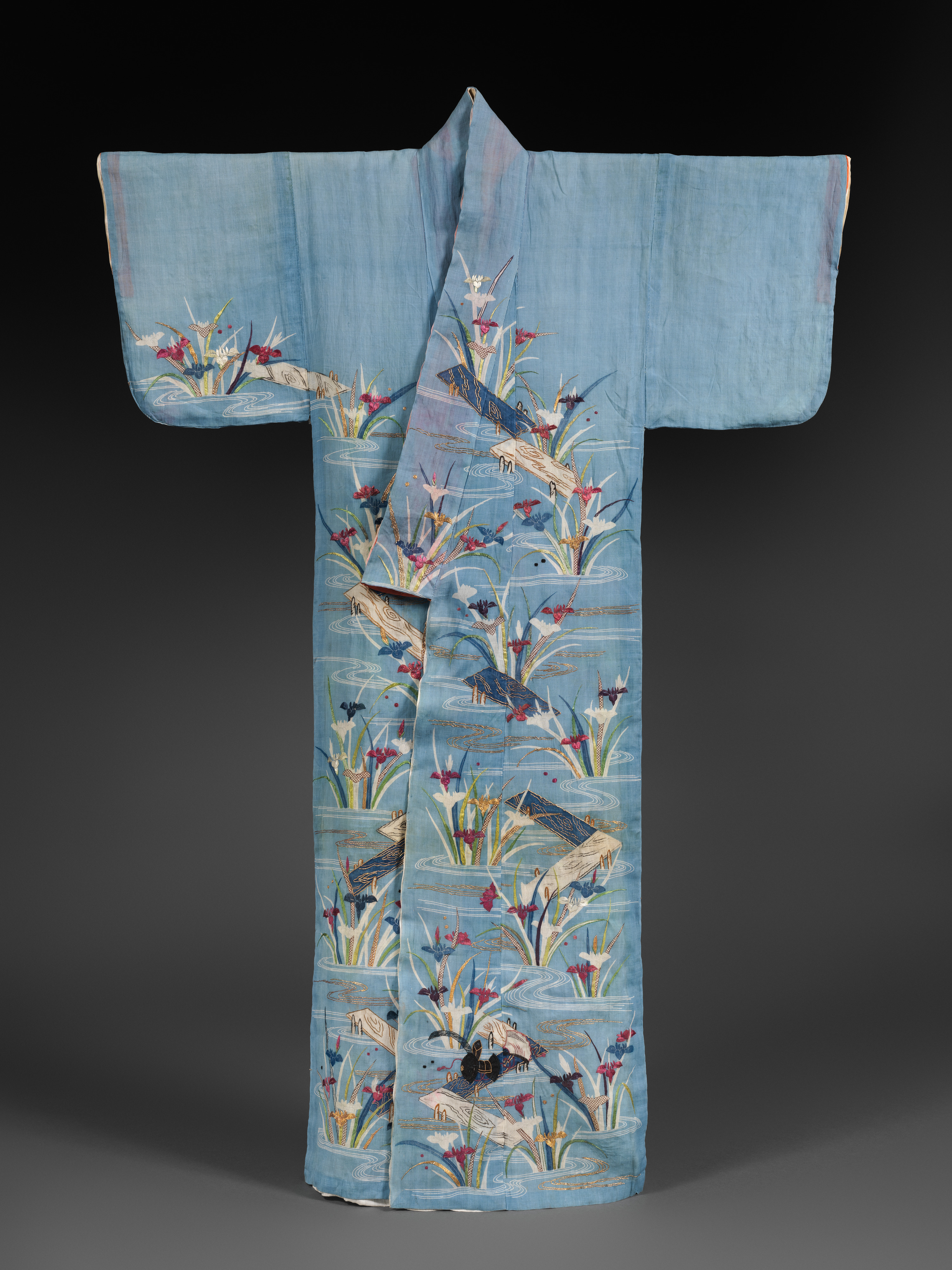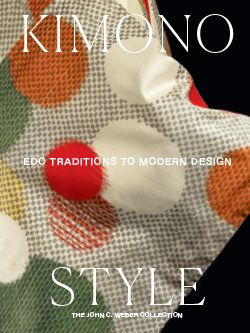Summer Robe (Katabira) with Irises at Yatsuhashi
Not on view
This samurai woman’s summer robe evokes water—light blue fabric with irises and zigzagging plank bridges. The composition refers to an episode from The Tales of Ise and the Noh play derived from it, Irises, in which an exiled ninth-century poet—alluded to on this robe by a courtier’s hat and a fan near the hem—and his friends leave the capital. Pausing at Yatsuhashi, where bridges cross eight channels of a river, they admire the irises growing in the riverbank. Inspired, the poet composes a poem in which each line begins with one of the five syllables of the word for “iris,” ka-ki-tsu-ba-ta.
Karagoromo / kitsutsu narenishi / tsuma shi areba / harubaru kinuru / tabi o shi zo omou.
I wear robes with well-worn hems, / Reminding me of my dear wife / I fondly think of always, / So as my sojourn stretches on / Ever farther from home, / Sadness fills my thoughts.
—translated by John T. Carpenter
Due to rights restrictions, this image cannot be enlarged, viewed at full screen, or downloaded.
This artwork is meant to be viewed from right to left. Scroll left to view more.




